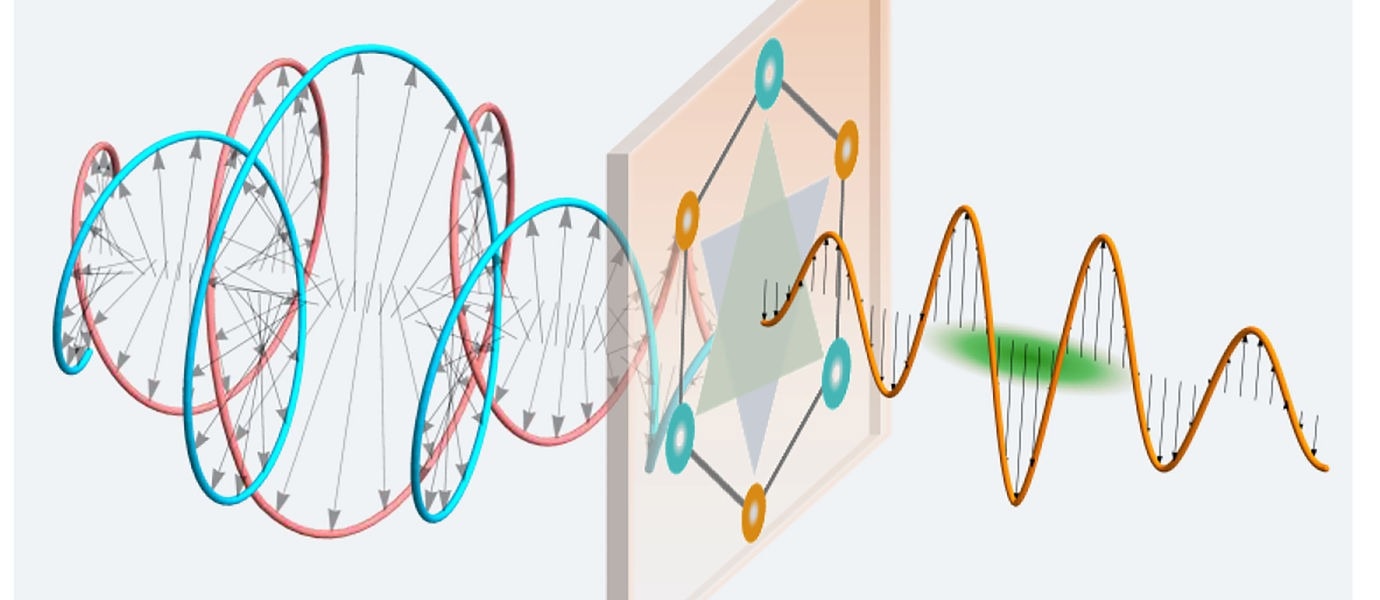Reviewed by Alex SmithJul 19 2022
A novel method for regulating a light beam’s characteristics has been created by researchers at the School of Electrical Engineering at Aalto University. The technology produces a more compact footprint and noticeably improved performance by using the handedness of the light beam.
 A schematic of perfect nonlinear modulation using chiral light beams. Image Credit: Yi Zhang / Aalto University.
A schematic of perfect nonlinear modulation using chiral light beams. Image Credit: Yi Zhang / Aalto University.
Handedness or chirality is everywhere, from electrons to molecules, from our hands to spiral galaxies. Light also has handedness. Our modulation method uses the handedness of light by selecting certain polarizations via the crystal structure of the material in the device. It’s a fundamentally different approach from previous methods.
Yi Zhang, Postdoctoral Researcher, Department of Electronics and Nanoengineering, Aalto University
Optical modulators are used to change the characteristics of a beam of light, including its intensity, phase, or polarization. One of the fundamental principles of optical technologies, including fiber optic communications, laser-based displays, and optical computing, is switching between states (for instance, between customizable and zero intensity).
The majority of optical modulators currently in use indirectly alter the characteristics of light through electrical or acoustic effects.
These two traditional optical modulator technologies can control the properties of light at nanosecond speeds. Our all-optical modulator, which uses a coherent optical process, can work at femtosecond speeds, or about a million times faster.
Yi Zhang, Postdoctoral Researcher, Department of Electronics and Nanoengineering, Aalto University
Zhang says the technique will be simple to translate from the lab to real-world applications, where it might lead to advancements in a variety of industries, from fiber optics to display technologies.
The principle we used to modulate the light more quickly and efficiently is quite clear, and I believe it could be applied very soon.
Yi Zhang, Postdoctoral Researcher, Department of Electronics and Nanoengineering, Aalto University
Professor Zhipei Sun, the group leader, concludes, “This new method holds great promise for advanced nonlinear optical devices, computing, and quantum technologies. It also provides extra choices of materials for current devices, which is beneficial for companies that produce optical modulators.”
Journal Reference:
Zhang, Y., et al. (2022) Coherent modulation of chiral nonlinear optics with crystal symmetry. Light: Science & Applications. doi.org/10.1038/s41377-022-00915-4.